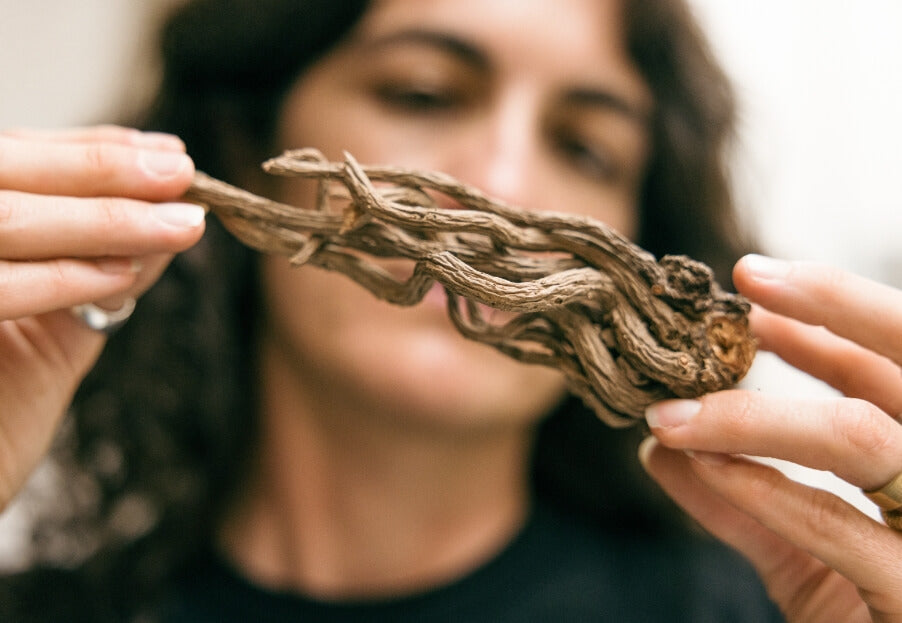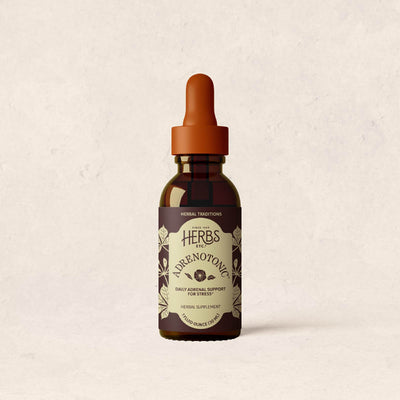Why and When We Use Dried Herbs

We're often asked: "Do you use fresh herbs or dried?"
And the truest answer is: it depends.
It's rare to find an herbalist who only works with one or the other. Instead, we take a nuanced, ecological approach: using fresh when fresh is appropriate and available, and using dried when that's what best serves the plant, planet, and potency of the product.
So, what does it depend on? The plant, of course!
Sourcing: Ecology and Integrity
Not every herb we work with is native to Turtle Island (North America), nor would it be ethical or sustainable to try to grow them all here. When we source these plants (such as Asian Ginseng, Eleuthero or Rhodiola) from overseas, the best environmental and economic option is sourcing them dried. Chartering a jet to get fresh herbs from China is not an environmentally friendly option! Shipping fresh plants halfway across the globe would be resource-heavy, fragile, and spoilage-prone.
Preservation: Potency and Processing
In general, dried plants are much more stable and have a longer shelf life than fresh plants because of their low or no water content. BUT once a dried herb (whether root, leaf or flower) is ground up, it begins to degrade and oxidize (aka lose potency). This happens because grinding exposes more surface area to air, heat, and light, which weakens herbal vitality. This leads to the oxidation of active compounds, loss of volatile oils, and overall degradation of medicinal quality.
That's why we never source dried herbs as powders, and instead, we do all of our cryogenic grinding in-house, ourselves. We grind each root, leaf, or flower just prior to tincturing so our products contain the maximum benefits of the plant and preserve their full spectrum of constituents. It's also why some recipes may call for you to freshly grind black pepper or cumin seeds instead of just using the powder, because flavor and medicinal value fade quickly once ground.
Medicine Making: Traditional Wisdom
Some processing methods require or result in dried material, especially plants that come from the Traditional Chinese Medicine tradition, for example Asian Ginseng (Panax ginseng).
We use both Red and White Ginseng at Herbs, Etc. in Ultimate Ginseng (Red & White) as well as Vibrant Energy (where we use Red for its more stimulating Yang-supporting qualities). Even though they are from the same plant, each form requires drying the root in a different way.
For example:
- Red Ginseng [Panax ginseng] is steamed before drying, which changes its chemistry and imparts a warmer, more stimulating effect.
* - White Ginseng [same plant, Panax ginseng] is simply harvested, cleaned, and dried.
It has a milder, more neutral energy than the steamed version.
Another herb we use is Dang gui (Angelica sinensis), which is found in our Menopautonic formula. This root can be processed in so many ways - Dry-Fried, Wine-fried, Vinegar-Fried, etc. Each way requires the herb to be dried in a different way and imparts a different quality to the finished product. One study actually showed that the Wine-fried Angelica was more effective than simply Dried Angelica at relieving gynecological ailments, (1).

So Why Use Dried Herbs?
Dried herbs allows us to work with plants from their native regions in a way that's ecologically responsible and medicinally sound. It lets us apply time-tested traditional processing methods that unlock unique properties of a plant. And when handled properly ground at the right moment, stored in the right conditions, and extracted with care, dried herbs can offer incredible potency, purity, and precision.
At Herbs, Etc., our goal is to use the right herb, in the right form, at the right time.
Because making great herbal medicine is all about the relationships behind them.
Bibliography
Zhan JY, Zheng KY, Zhu KY, Zhang WL, Bi CW, Chen JP, Du CY, Dong TT, Lau DT, Tsim
KW. Importance of wine-treated Angelica Sinensis Radix in Si Wu Tang, a traditional herbal formula for treating women's ailments. Planta Med. 2013 May;79(7):533-7. doi: 10.1055/s-0032-1328261. Epub 2013 Mar 1. PMID: 23457023.

Written by Blaire Edwards Maschotta - HERBALIST & PRODUCT DEVELOPER





